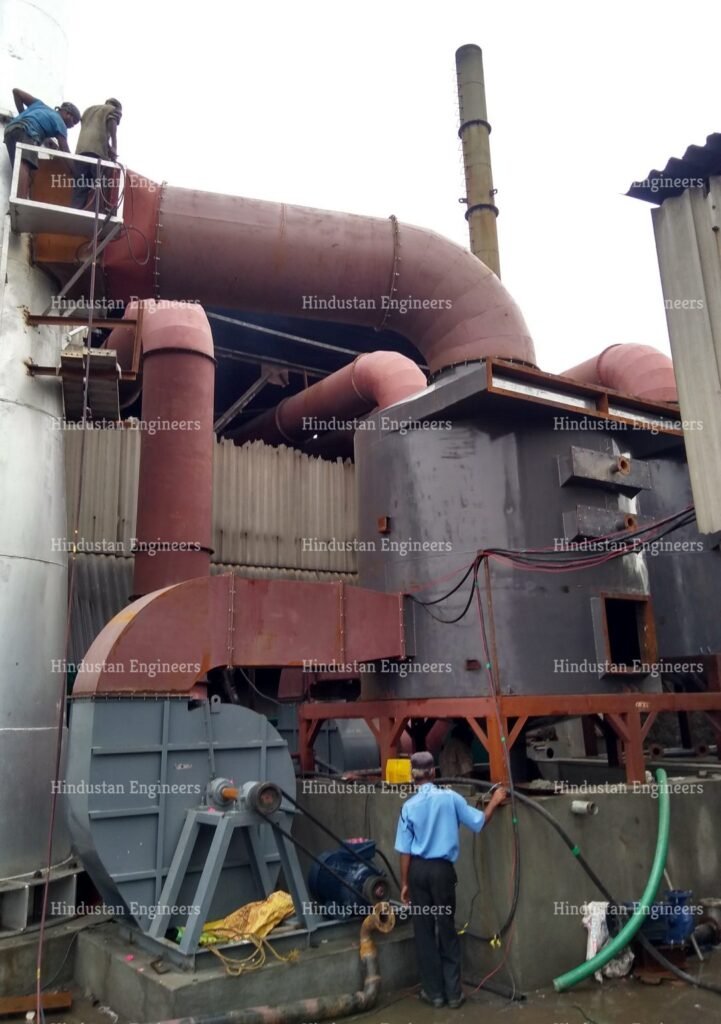An industrial scrubber, also known as an air scrubber or gas scrubber, is a type of air pollution control device used to remove pollutants and contaminants from industrial exhaust gases. These scrubbers are commonly used in a variety of industries, including manufacturing, chemical processing, pharmaceuticals, and power generation, to reduce emissions and protect the environment.
Here are the key components and features of an industrial scrubber :
Scrubbing Chamber: The scrubbing chamber is the primary component of the scrubber where the gas or exhaust stream comes into contact with the scrubbing medium. It is typically a vessel or tower designed to promote efficient gas-liquid contact.
Scrubbing Medium: The scrubbing medium is a liquid or combination of liquids that capture or react with the pollutants in the exhaust gas. Common scrubbing mediums include water, chemical solutions, or solvents, depending on the specific contaminants being targeted.
Spray Nozzles: Spray nozzles are used to distribute the scrubbing medium evenly throughout the scrubbing chamber. They create a fine mist or spray that comes into contact with the exhaust gas, facilitating the absorption or chemical reaction of the pollutants.
Mist Eliminators: To prevent the loss of scrubbing medium, mist eliminators are often installed at the top of the scrubbing chamber. These devices capture any liquid droplets carried by the gas stream and return them back into the scrubbing chamber.
Exhaust Outlet: The cleaned and treated gas is discharged through an exhaust outlet after passing through the scrubbing chamber. Proper containment and disposal of any byproducts or residual pollutants are important considerations to comply with environmental regulations.
Monitoring and Control System: Many industrial scrubbers feature a monitoring and control system to regulate the scrubber’s operation and optimize its efficiency. This system may include sensors, control panels, and data logging capabilities to monitor and adjust the flow of the scrubbing medium, gas velocity, and other relevant parameters.
The design and configuration of an industrial scrubber depend on the specific pollutants being targeted, the volume and temperature of the gas stream, and other operational requirements. Consulting with experts in air pollution control and working with reputable manufacturers or suppliers can help in selecting the appropriate scrubber system for a given application.
It is important to note that different types of industrial scrubbers exist, such as wet scrubbers, dry scrubbers, and scrubber systems that use specific chemical reactions to remove pollutants. The selection of the most suitable type of scrubber depends on factors such as the nature of the pollutants, regulatory requirements, and the specific industrial process.

